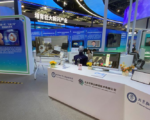In Germany’s Black Forest, near the medieval town of Rottweil, a towering structure called TK Elevator Testturm rises 807 feet into the sky. While it ranks among the country’s tallest buildings, this skyscraper is not home to offices or luxury apartments — it’s a massive elevator testing facility.
The tower, built by German manufacturer TK Elevator, is primarily used to test the latest elevator models. Inside, 12 shafts allow for rigorous testing of safety features and performance. TK Elevator, known for installing elevators in skyscrapers like New York’s One World Trade Center, also operates test towers in Atlanta and Zhongshan, China, with the latter standing 813 feet tall, nearly three times the height of the Statue of Liberty.
Test towers serve a critical role in elevator safety, according to Tomio Pihkala, chief technology officer at Finnish manufacturer Kone. “It’s like a test track for a Formula One team,” he explained. “Certain safety functionalities can only be verified in a real-world environment.”
To simulate real operating conditions, test towers augment conditions that elevators would face in functioning buildings, but without passengers. One notable test is the freefall simulation, which tests an elevator’s emergency braking system. With modern elevators reaching speeds over 30 feet per second, these tall test towers provide ample space for acceleration and deceleration.
For extremely high-speed elevators, even taller towers are necessary. For example, the H1 Tower in Guangzhou, China, reaches 948 feet and is one of the tallest buildings in the city. It’s also taller than many structures in New York and Los Angeles. But some tests, like those conducted in Tytyri, Finland, take place underground, where an old limestone mine serves as a long, deep elevator testing facility.
Test towers aren’t just for function — they also need to be sturdy. Like skyscrapers, they must withstand strong winds and potential earthquakes, which can affect elevator testing. To mitigate these forces, some towers are equipped with mass dampers, large pendulums that counteract vibrations. The TK Elevator Testturm in Rottweil uses a 200-ton tuned mass damper, which engineers can manipulate to simulate challenging conditions like earthquakes and strong winds.
Despite its practical function, the Rottweil tower has become a local landmark since it opened in 2017. The structure features a sleek, fiberglass exterior that protects it from the elements, and it has drawn visitors to its observation deck, which offers panoramic views of the Black Forest and, on clear days, the Swiss Alps. Visitors ascend to the deck in just 30 seconds via an elevator that moves at a speed of 26 feet per second. The tower even hosts an annual stair run, attracting over 1,000 participants.
Though it’s not designed for residential or office use, the tower serves as a testbed for cutting-edge technology, and for many, it offers a unique glimpse into the future of high-speed elevators — all while being an unexpected tourist destination.










